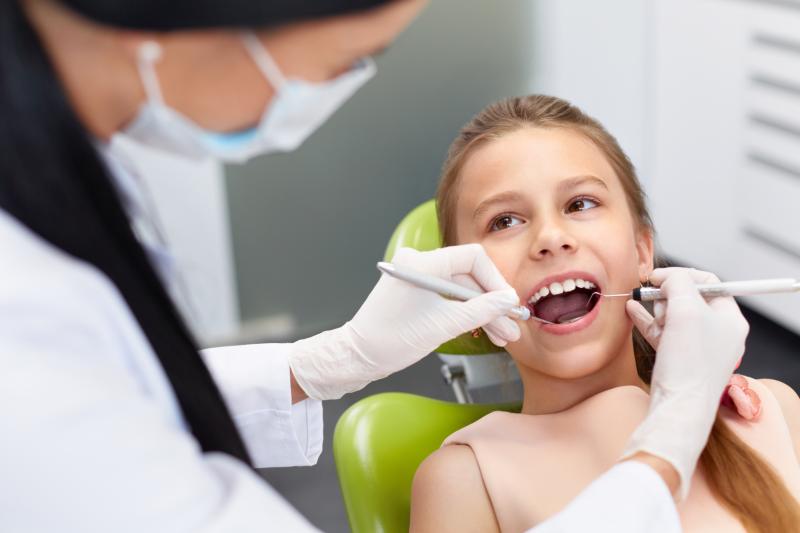Automated device regulates IV administration in paediatric dental surgery




 How can dentists make children feel less afraid of them?
How can dentists make children feel less afraid of them?An automated pump-delivery device can regulate the intravenous (IV) admission of fluids during paediatric dental surgery, preventing excessive fluid delivery, according to a new study.
“This randomized-controlled trial showed excessive IV fluid administration occurs significantly more often when IV fluid volume is controlled using a manual gravity-drip device compared with an automated pump-delivery device in paediatric dental surgery,” the researchers said.
Forty-nine children (mean age, 5±2.4 years; 49 percent male) were randomly assigned to undergo dental procedures with the automated pump-delivery device for IV fluid administration. Fifty-three patients (mean age, 4.9±2.2 years; 51 percent male) were set as controls and assigned to gravity-drip devices. The respective groups underwent an average fasting duration of 782±161 and 779±122 minutes before the surgery.
The study’s primary outcome was the proportion of procedures wherein the delivered fluid volume exceeded the target by ≥10 percent. This was reported in eight of the 49 children in the automated device group, yielding an overall rate of 16 percent. [Can J Anaesth 2020;doi:10.1007/s12630-020-01776-4]
In comparison, such excess was observed in 33 patients in the manual gravity-drip group, corresponding to a rate of 62 percent. The relative risk estimate for the primary outcome was significantly lower in the automated device group (0.26, 95 percent confidence interval [CI], 0.13–0.51; p<0.001).
Moreover, children who had been assigned to the manual drip device received 3.2 mL·kg–1 (95 percent CI, 1.29–5.17; p<0.001) more fluid than their initial target.
Unanticipated fluid boluses occurred rarely (one of 53 in the gravity-drip arm, and four of 49 in the automated pump device arm) and were not responsible for excess IV administration. Similarly, the anaesthesiologists’ fluid prescription practices were comparable between arms (variance ratio, 1.6, 95 percent CI, 0.9–2.79; p=0.06).
“The aim of this study was to determine if excessive IV fluid administration could be reduced by the use of an automated pump-delivery device compared with a manual gravity-drip device in paediatric patients,” the researchers said. “Our intent was not to investigate clinical benefit given the low-risk nature of the procedure and study population.”
An overall change of 3.2 mL·kg–1 in fluid volume may be of limited clinical value, they added. However, the findings may still apply to other, more high-risk cases, such as in children with major comorbidities undergoing more invasive procedures.
Another limitation of the present study was the failure to blind the anaesthesiologists, which might have skewed the findings and underestimated the actual risk of excessive fluid administration.
“Future studies should investigate how intraoperative fluid control devices affect clinical outcomes,” the researchers said.